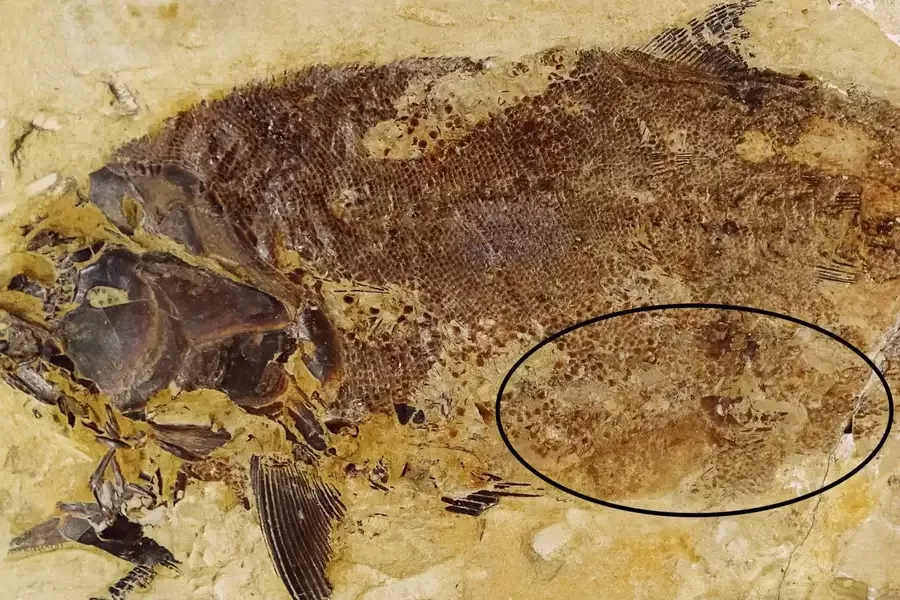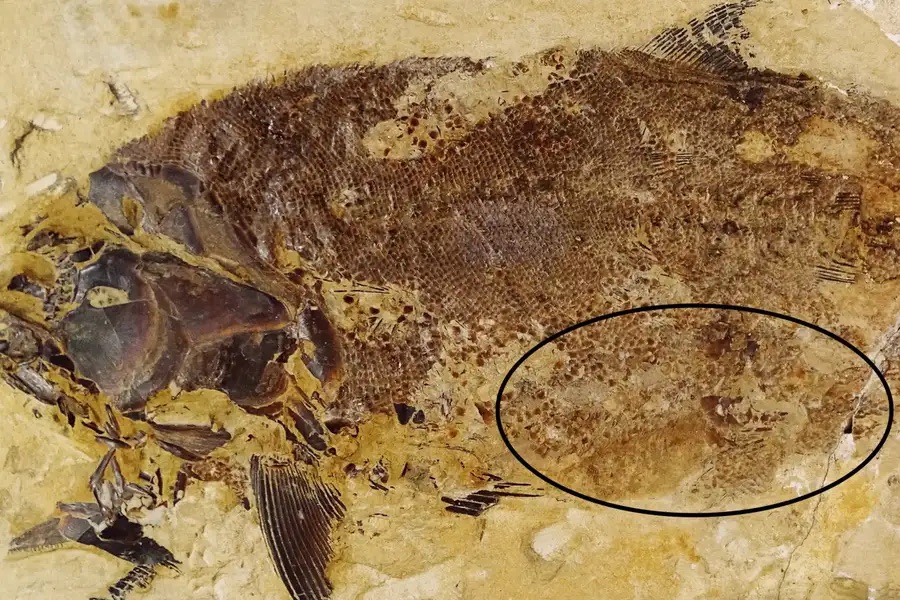The team uncovered the odd, prehistoric behavior by analyzing a well-preserved set of fossils
The fossils belonged to an extinct group of ray-finned fish known as the Pachycormiformes, which lived during the Jurassic period.
“This kind of stemmed from an accidental discovery,” Samuel Cooper at the State Museum of Natural History Stuttgart in Germany told New Scientist.
“They became extinct right at the end of the Cretaceous, along with the dinosaurs,” Cooper said.
While looking at the fossils, Cooper and researchers uncovered that several fish had “undigested, young Pachycormus” in their guts.
This could be due to one of two possibilities: cannibalism, or giving birth to live young.
If it’s the latter, the internal fossilized fish could be fetuses rather than prey.
However, Cooper believes cannibalism is the likely explanation, given that some of the specimens had the remains of unrelated fish in their guts.
Moreoever, in all of the cases all three specimens are juveniles, which suggests they may have been common prey.
“The great thing about gut contents is a lot of the ambiguity is gone,” says Stephanie Drumheller at the University of Tennessee in Knoxville.
“It’s definitely cannibalism,” Drumheller added.
The P. macropterus specimens all originated from a quarry near Curcy in France.
However, because the site no longer exists, scientists can’t revisit it from re-excavation.
Cooper noted that the location where the specimens are found is significant because it gives insight into whether cannibalism was normal behavior.
“We’ve got lots of specimens – this is a very abundant fossil fish from the Jurassic,” he says.
This implies that cannibalism was perhaps not their normal behavior, and instead could mean that conditions were hostile.
“Usually, when we see cannibalism at such a high level in a population of fish, it’s because the environment is stressed,” he said.

